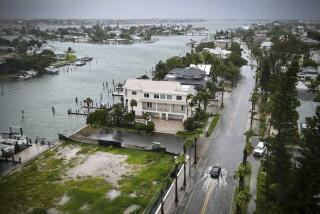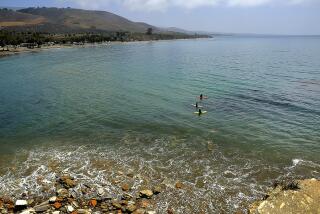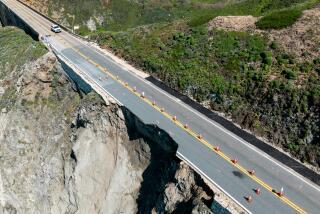Rebuilding will provide boon
The hit to Florida’s $500 billion economy from Hurricane Charley will soar into the tens of billions of dollars but the negative effects will be offset by nearly as much in spending on reconstruction, economists said Tuesday.
“For Hurricane Charley, I don’t foresee any major impact on the overall economy of Florida,” said Randall G. Holcombe, a Florida State University economics professor.
While individual losses are catastrophic and the effects are felt unevenly from business to business and region to region, increased construction spending actually could add to the gross state product, the broadest measure of the economy, in the coming year, Holcombe said.
In Central Florida, the rebuilding will range from schools and homes that were smashed by trees to airports that lost hangars and light planes. But it will take weeks and months to get good estimates of the economic costs ranging from damaged citrus and commercial foliage to lost wages for displaced workers.
“We’re focusing on the recovery and the safety of citizens right now. We have no numbers or hard data,” said Scott Openshaw, spokesman for the Governor’s Office of Tourism, Trade and Economic Development. “There’s just a lot of hard work to be done.”
After Hurricane Andrew ravaged parts of South Florida in 1992, sales tax revenue rose along with construction spending, boosting the state’s coffers during an economic downturn, said Holcombe, who is one of 11 members of the Florida Governor’s Council of Economic Advisers. The reason: construction supplies are taxable.
“State and local economies will recover pretty quickly, and we saw that after Andrew,” Holcombe said.
Florida’s economy is stronger now than it was more than a decade ago and while the reconstruction spending on everything from homes to hotels will take time to crank up, the benefits will linger for a long time, economists said.
“A year from now, the positive impact might still be felt,” said University of Louisville economics professor Jim McCabe.
Estimates of insured losses from Charley range from $6 billion to $14 billion or more and virtually all of that will flow back into the state through construction spending and related costs.
Most of the losses and rebuilding will be on the southwest coast in the Punta Gorda and Port Charlotte areas, but just as in the case of Andrew, which spared the metro Miami area, Charley missed the densely packed Tampa area.
Representatives of Florida’s Division of Emergency Management said the state does not yet have a breakdown of financial needs that will be forwarded to the federal government for short- and long-term aid and loans. Some of the key industries affected include:
Banking, which will benefit from billions of dollars in short-term deposits from property-claims checks and from loans to individuals and businesses. The impact is not likely to be a long-term benefit, however, because claims deposits typically flow in quickly, within three months of a disaster, and flow out quickly as repairs are made and reconstruction is under way. Emergency loans also are typically low interest and fees often are waived.
Construction. Everything from small roofing companies to large construction firms will benefit, but primarily in about a dozen key counties from Lee and Collier on the west coast to Orange, Polk and Osceola in the interior and Volusia on the east coast.
Agriculture, which took severe blows to citrus, commercial foliage, tropical fruit and some of the early fall-season vegetable fields. The Florida Fruit and Vegetable Association in Orlando said that farmers are still “digging out from downed trees, lost crops and broken irrigation systems” from Pine Island on the west coast to Polk County.
Tourism, which had been enjoying a strong summer season. The industry typically takes a hit when storms damage the state, even though major theme parks are up and operating and most beaches from the Keys to the Panhandle were unscathed. “We’re pretty much in full operation,” in the Orlando area, a representative of the Orlando/Orange County Convention and Visitors Bureau told the state’s Visit Florida board of directors on Monday. “Our hotels came through in flying colors,” said Bill McCreary, president of Tishman Hotel Corp. in Orlando.
Major resorts south of Tampa Bay directly in the storm’s path also weathered the storm fairly well but small hotels and motels were hit hard along with small businesses and mobile home parks. Tourism is the state’s largest industry, and Gov. Jeb Bush pledged to throw the state’s full support behind the effort to rebuild.
“Get your businesses back up, so you can hire people,” Bush told tourism executives.
Jerry W. Jackson can be reached at 407-420-5721 or jwjackson@orlandosentinel.com.
More to Read
Sign up for Essential California
The most important California stories and recommendations in your inbox every morning.
You may occasionally receive promotional content from the Los Angeles Times.










